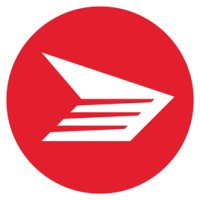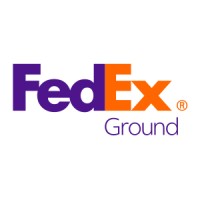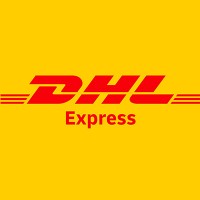
Pos Malaysia Berhad Company Cyber Security Posture
pos.com.myPos Malaysia Berhad [199101019653 (229990-M)] is the national postal and parcel service provider and sole licensee for universal postal services in Malaysia. With a history of over 200 years, the company has diversified beyond the traditional provision of mail and parcel delivery to also offer retail, logistics, and aviation products and services. It has also pivoted from a mail company that also delivers parcels, to a parcel delivery company that also delivers mail. Pos Malaysia has the most extensive last-mile reach, delivering to more than 11 million addresses nationwide. It also has a network of more than 3,800 touchpoints with presence across the country providing Malaysians the most comprehensive retail network. Pos Malaysia is majority-owned by conglomerate DRB-HICOM Berhad.
PMB Company Details
pos-malaysia-berhad
10,001+ employees
0
492
Freight and Package Transportation
pos.com.my
12
POS_1599564
In-progress
Between 900 and 1000
This score is AI-generated and less favored by cyber insurers, who prefer the TPRM score.
 PMB Global Score
PMB Global Score.png)

Pos Malaysia Berhad Company Scoring based on AI Models
| Model Name | Date | Description | Current Score Difference | Score |
|---|---|---|---|---|
| AVERAGE-Industry | 03-12-2025 | This score represents the average cybersecurity rating of companies already scanned within the same industry. It provides a benchmark to compare an individual company's security posture against its industry peers. | N/A | Between 900 and 1000 |
Pos Malaysia Berhad Company Cyber Security News & History
| Entity | Type | Severity | Impact | Seen | Url ID | Details | View |
|---|
Pos Malaysia Berhad Company Subsidiaries

Pos Malaysia Berhad [199101019653 (229990-M)] is the national postal and parcel service provider and sole licensee for universal postal services in Malaysia. With a history of over 200 years, the company has diversified beyond the traditional provision of mail and parcel delivery to also offer retail, logistics, and aviation products and services. It has also pivoted from a mail company that also delivers parcels, to a parcel delivery company that also delivers mail. Pos Malaysia has the most extensive last-mile reach, delivering to more than 11 million addresses nationwide. It also has a network of more than 3,800 touchpoints with presence across the country providing Malaysians the most comprehensive retail network. Pos Malaysia is majority-owned by conglomerate DRB-HICOM Berhad.
Access Data Using Our API

Get company history
.png)
PMB Cyber Security News
Hacking shakes up brokerage industry
The breach has highlighted a critical cybersecurity gap in Malaysia's brokerage industry, posing serious risks to investors and the broader ...
Bursa Malaysia forms industry working group to strengthen cybersecurity in stockbroking
KUALA LUMPUR: Bursa Malaysia Bhd has formed a dedicated industry working group to strengthen cyber resilience across the Malaysian ...
Pos Malaysia Partners with Whoscall to Launch #ScamFreeMalaysia Initiative, Enhancing Security Against Parcel Scams
“The collaboration between Pos Malaysia and Whoscall represents a significant step in the ongoing efforts to combat online scams, including ...
Know Your CISO: Aishah Farha Mohd Raih, Permodalan Nasional Berhad
In this edition of our Know Your CISO series, we talked with Aishah Farha Mohd Raih, CISO, Permodalan Nasional Berhad (PNB), ...
Bursa Malaysia Confirms Trading Accounts Compromised to Manipulate Share Prices
Something strange is going down on Bursa Malaysia, and it's not just your average market volatility.
Widespread hacks hit stock trading accounts in Malaysia
A surge of complaints emerged on Thursday evening from investors across Bursa Malaysia, reporting that their accounts have been hacked and ...
Police Join Forces To Battle Parcel Scam
Pos Malaysia Berhad and Whoscall, a leading anti-scam application by Gogolook, have partnered to advance the #ScamFreeMalaysia initiative.
Pos Malaysia CEO apologises for response to mailman who asked about replacing torn uniform
PETALING JAYA: Pos Malaysia Berhad group chief executive officer Charles Brewer, has apologised for his response to a postman who asked on ...
Outstanding companies celebrated at 2025 Malaysia National Business, Malaysia International Business and Malaysia Technology Excellence Awards
Outstanding companies celebrated at 2025 Malaysia National Business, Malaysia International Business and Malaysia Technology Excellence Awards.

PMB Similar Companies

Canada Post / Postes Canada
As the country's postal service and leading ecommerce delivery company, we’re committed to serving Canadians and Canadian businesses, working for the greener good, and delivering a stronger Canada. We are the only delivery organization with the network and commitment to serve all of the more than 1

FedEx
FedEx connects people and possibilities through our worldwide portfolio of shipping, transportation, e-commerce and digital supply chain services. For decades, we’ve been innovating to deliver more for you. Strengthening supply chains with our global network. Simplifying logistics. Enhancing trackin

VNPost
Tên giao dịch: Tổng Công ty Bưu chính Việt Nam Tên viết tắt: Bưu chính Việt Nam Tên giao dịch quốc tế: Vietnam Post Tên viết tắt quốc tế: VNPost Với mạng lưới các điểm phục vụ rộng khắp, trải dài đến tận cấp xã trên cả nước và kinh nghiệm cung cấp các dịch vụ về Bưu chính chuyển phát, các d

Magyar Posta
A Magyar Posta Zrt. több mint 150 éve Magyarország ismert és elismert nemzeti postai szolgáltatója. Magyarország egyik legnagyobb foglalkoztatójaként 21.000 munkavállaló segítéségével, több mint 2150 postájával és 450 mobilposta járatával behálózza az országot, egymással és

FedEx Ground
At FedEx Ground we are extremely proud of our inclusive and diverse workforce. We ensure people of diverse backgrounds are welcome and included, while constantly ensuring equal opportunities for every employee to contribute to our common goals. FedEx Ground is an integral part of FedEx Corporatio

DHL Express Italy
Presente in oltre 220 Paesi nel mondo con proprie sedi e persone, la nostra azienda è in grado di unire alla capillarità del network la conoscenza approfondita dei mercati locali, delle procedure doganali e delle caratteristiche di trasporto e distribuzione specifiche dei diversi Paesi. Ogni gi

Frequently Asked Questions
Explore insights on cybersecurity incidents, risk posture, and Rankiteo's assessments.
PMB CyberSecurity History Information
How many cyber incidents has PMB faced?
Total Incidents: According to Rankiteo, PMB has faced 0 incidents in the past.
What types of cybersecurity incidents have occurred at PMB?
Incident Types: The types of cybersecurity incidents that have occurred include .
Incident Details
What are the most common types of attacks the company has faced?
Additional Questions
What Do We Measure?
















Every week, Rankiteo analyzes billions of signals to give organizations a sharper, faster view of emerging risks. With deeper, more actionable intelligence at their fingertips, security teams can outpace threat actors, respond instantly to Zero-Day attacks, and dramatically shrink their risk exposure window.
These are some of the factors we use to calculate the overall score:
Identify exposed access points, detect misconfigured SSL certificates, and uncover vulnerabilities across the network infrastructure.
Gain visibility into the software components used within an organization to detect vulnerabilities, manage risk, and ensure supply chain security.
Monitor and manage all IT assets and their configurations to ensure accurate, real-time visibility across the company's technology environment.
Leverage real-time insights on active threats, malware campaigns, and emerging vulnerabilities to proactively defend against evolving cyberattacks.




